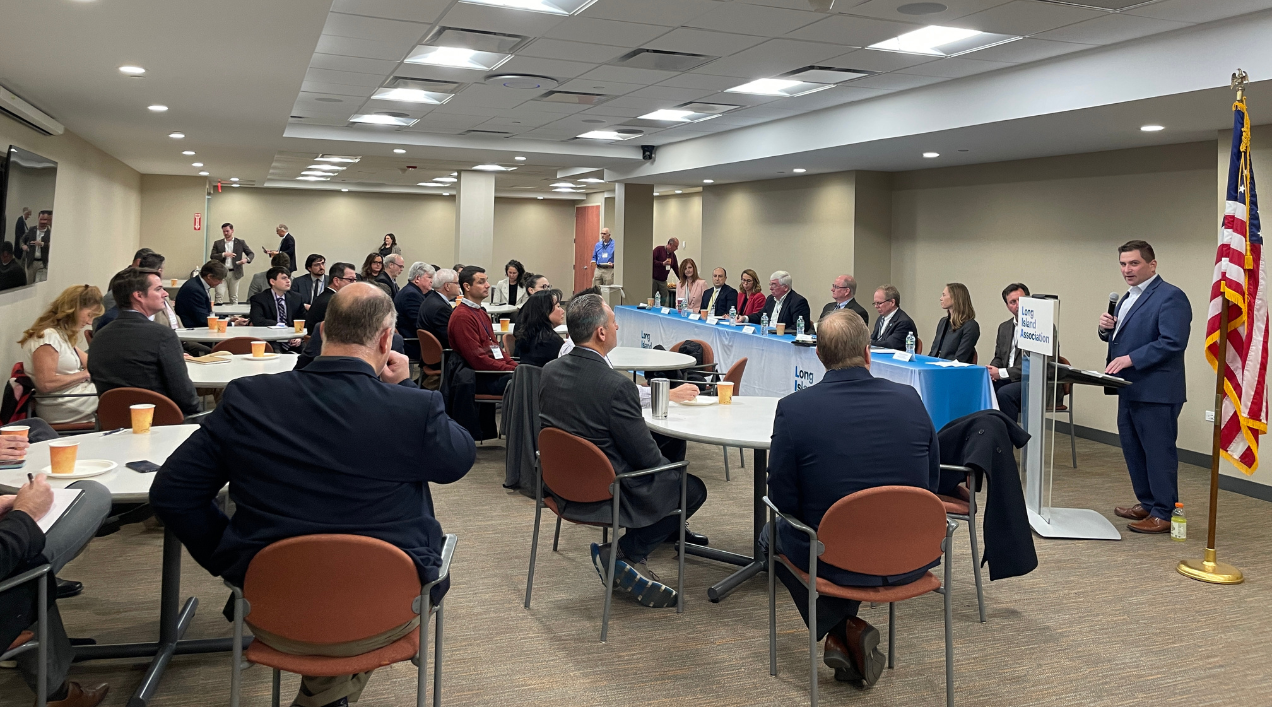- Tritec News
Unlocking Economic Potential on Long Island: The Crucial Role of Sewer Systems
On top of its role in maintaining Long Island’s environmental health, water quality is an engine that drives the regional economy. And that engine, according to government representatives and water experts, is powered tremendously by community access to sewer systems.
The link between sewer infrastructure and economic development headlined a panel discussion hosted last week in Melville by the Long Island Association’s Energy and Environment Committee. County executives and leading figures in conservation, engineering and real estate development discussed how wastewater management is not just the dirty work that goes on behind the scenes but also the key to smart growth, innovation and mixed-use projects like TRITEC’s Station Yards in Ronkonkoma.
“If we want to promote smart, compact, orderly growth and transit-oriented development, we need to provide sewer infrastructure in the communities where those projects are going,” said Peter Scully, deputy county executive for Suffolk County. “Or they simply won’t happen.”
TRITEC Executive Vice President Kelley Coughlan-Heck offered the developer’s perspective, highlighting Station Yards and its projected creation of 12,000 construction jobs, 2,700 permanent jobs and nearly 1,500 “desperately needed homes.”
“None of it would be possible without access to sewers,” Coughlan-Heck said.
Sewers were not available when TRITEC was named master developer of the Ronkonkoma Hub in 2011, Coughlan-Heck said. The company worked with Suffolk County and various agencies to install a 7-mile forced sewer main and a Station Yards pump station capable of handling 1.5 million gallons of wastewater per day. Once fully built, Station Yards will require only about a quarter of that capacity, leaving more than a million gallons of daily sewer capacity for area housing and businesses.
With this infrastructure in place, TRITEC expects Station Yards to generate $40 million in annual discretionary income from new residents, most of which will be spent within 10 miles of Ronkonkoma.
“Everyone needs to get a haircut, go to the grocery store and get their car serviced,” Coughlan-Heck said of the project’s local economic impact.
Panelists outlined the unique wastewater challenges that both Nassau and Suffolk are working to overcome and the progress they have made in clearing economic and environmental barriers.
Scully said Suffolk County, which is largely unsewered, is focused on connecting its cesspool-reliant communities to sewers and upgraded wastewater systems. The county has a long-term infrastructure plan that will invest $4.2 billion over 50 years and replace 299,000 individual septic systems and cesspools.
Downtowns like Patchogue, Port Jefferson, Huntington and Babylon are thriving because of sewer access, Scully said, while other redevelopments like Kings Park and Smithtown have lagged without vital wastewater infrastructure.
Coughlan-Heck said TRITEC, as master developer of Smithtown’s planned downtown revitalization, is prepared to work with government to address the sewer issue like at Station Yards.
“Anything we can do to be part of that sewer solution will be a critical component to getting the project up and running,” she said.
Nassau County’s priority is on funding the maintenance of its extensive sewer systems, most of which are aging or past the end of their service life. Department of Public Works Commissioner Kenneth Arnold pointed to recent upgrades in Hempstead and Sea Cliff that have accelerated development and business improvements in those villages.
Coughlan-Heck said sewer infrastructure also allows for continued advances in technology and innovation, which in turn have long-term economic benefits. She cited Collaborative Laboratories — today part of TRITEC’s Stony Brook Technology Center — and a blood test It developed in the 1980s that required daily changes to the lab’s waste stream. Without sewer access, approvals for such a change at the time would have taken months.
The 103-acre Tech Center campus is connected to Town of Brookhaven Sewer District #1, which TRITEC helped establish with cooperation from local and state government. Since its inception, SBTC has created thousands of jobs and provided vital medical and technological services in Suffolk County.
”We’ve talked a lot about economic benefits of sewer access,” Coughlan-Heck said, “but we also have to think about the innovation implications that come with it.”

